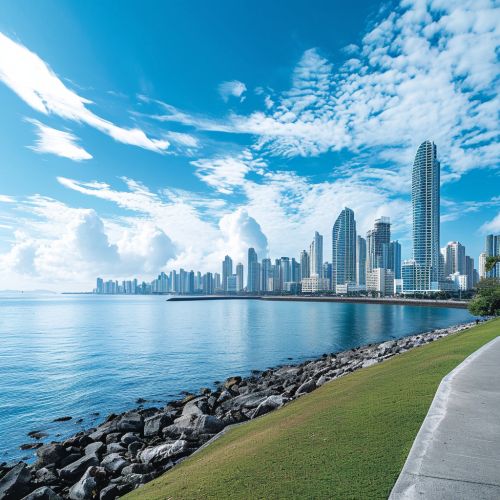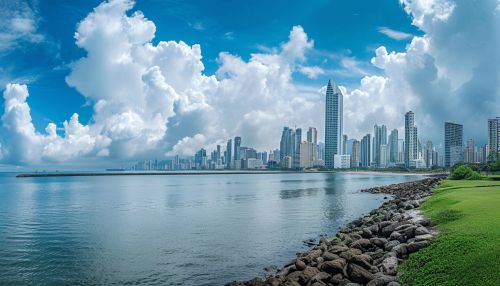Panama City
Geography
Panama City, the capital and largest city of the Republic of Panama, is located at the Pacific entrance of the Panama Canal. The city is the political and administrative center of the country, as well as a hub for international banking and commerce. It is considered a "beta-" global city, one of three Central American cities listed in this category.


The city is located in the province of Panama, and its exact coordinates are 8.983333, -79.516667. It is situated on the eastern Pacific coast of the country, near the Panama Canal. The city's elevation is at sea level and it has a tropical savanna climate.
History
The area where Panama City now stands was originally inhabited by several indigenous groups before the arrival of the Spanish in the 16th century. The city was founded on August 15, 1519, by Spanish conquistador Pedro Arias Dávila, making it the first European settlement on the Pacific Coast of the Americas. The city served as a launch point for expeditions that conquered the Inca Empire in Peru.
In 1671, the city was destroyed by the pirate Henry Morgan. It was rebuilt a few years later, in 1673, in a new location approximately 8 km away from the original site. The ruins of the old city, known as Panama Viejo, are a popular tourist attraction today.
Economy
Panama City's economy is service-based, heavily weighted toward banking, commerce, and tourism. The city has a high level of economic development and quality of life. It is the economic and financial center of the country, hosting many banks and national and international companies.
The city's economy is tied to the operation of the Panama Canal. The canal not only provides the city with a significant amount of tourism but also promotes the city as a gateway to international trade.
Culture
Panama City is a multicultural place, with people from many different parts of the world living and working in the city. The city is culturally diverse, with a mix of modern buildings, colonial structures, and a vibrant nightlife.
The city is home to many festivals and events, including the Panama Jazz Festival and the Panama International Film Festival. It also has a vibrant culinary scene, with a wide variety of restaurants offering local and international cuisine.
Education
The city is home to several universities, including the University of Panama, the oldest university in the country. Other universities in the city include the Technological University of Panama, the Latin University of Panama, and the Florida State University Panama Campus.
Transportation
Panama City is served by Tocumen International Airport, the largest and busiest airport in Central America. The city also has a modern and efficient metro system, the Panama Metro, which is the first of its kind in Central America.
